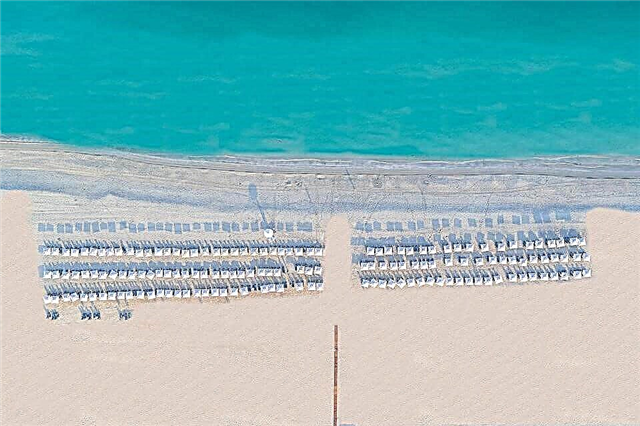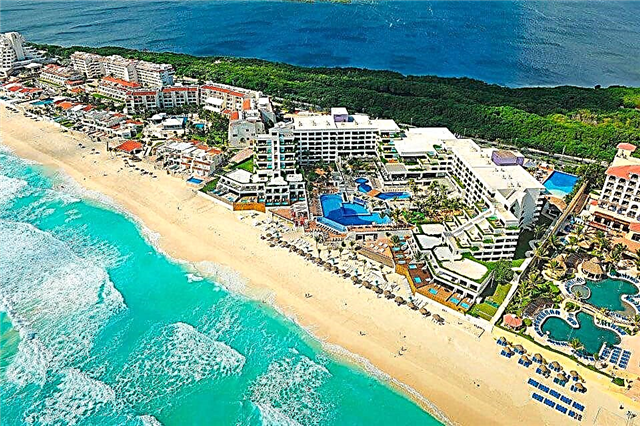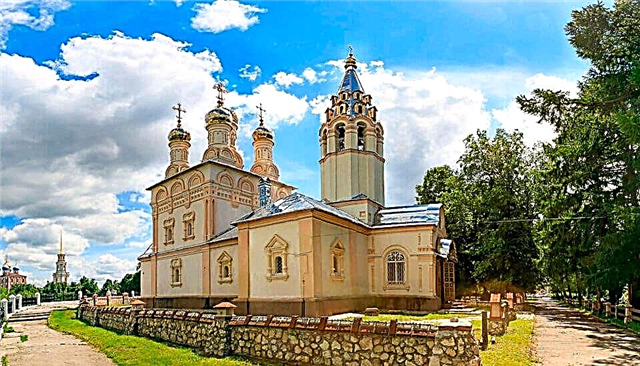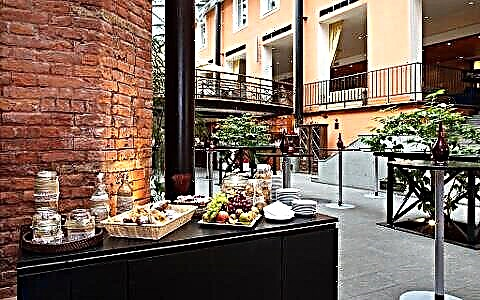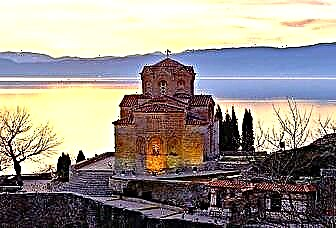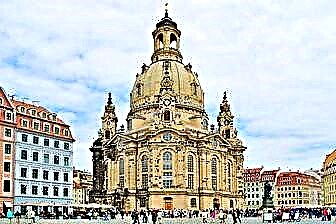Dresden has long been considered the cultural capital of Saxony. For tourists, it is one of the most interesting German cities. It is a picturesque oasis in the Elbe Valley - surprisingly harmonious, calm and graceful. Dresden's many attractions have been expertly restored after the destruction of World War II, so today thousands of tourists can admire its unique atmosphere.
The cultural treasures of the Dresden museums were carefully preserved for future generations and taken out of the city during the terrible bombing raids. After reconstruction, many collections were returned to the city. Today, guests can still enjoy the exhibitions and learn from them the history of ancient Saxony.

The best hotels and hotels at affordable prices.
from 500 rubles / day
What to see and where to go in Dresden?
The most interesting and beautiful places for walking. Photos and a short description.
Zwinger
Palace and park complex of the 18th-19th centuries Its construction began under the Saxon Elector Augustus the Strong, who was impressed by the beauty of the French Versailles and wanted to build an equally beautiful residence in his kingdom. On the territory of the Zwinger, there is a picturesque landscape park and several famous museums. The complex was significantly damaged during the bombing of 1945; most of the palace was rebuilt from ruins.

Albertinum
Dresden Art Museum. Until the end of the 19th century, the building housed the Arsenal, then the city archives and museum collections were located here. The gallery got its name in honor of King Albert, who was an ardent admirer and connoisseur of art. The Albertinum exhibits works by masters who worked in the style of realism, impressionism, and romanticism. In addition to paintings, there is a rich sculptural exposition.

Gallery of old masters
Museum located in one of the Zwinger palaces. The gallery contains unique masterpieces by artists dating back to the Renaissance. The collection began to form in the first half of the 18th century with the assistance of the rulers August II and August III. Before the Zwinger bombing began, the paintings were taken out of the museum, so they were saved from destruction. Until 1965, the gallery's collection was located on the territory of the USSR.

Dresden Castle Residence
Official seat of the Saxon rulers. According to historical documents, the first fortress appeared on this site at the end of the 13th century. Over time, the building acquired an increasingly solemn appearance in accordance with the architectural traditions of successive eras. By the middle of the 16th century, the palace became a residence and was rebuilt in the Renaissance style. By the 19th century, the facade was "overgrown" with baroque elements and acquired its modern look.

Brühl's Terrace
A section of the Elbe embankment with a length of about 500 meters. In the 19th century, it was a popular stroll for the European nobility, who flocked to Dresden to admire the picturesque views of the city and the river. It was at that time that Brühl's terrace began to be called “the balcony of Europe”. In the 16th century, the promenade was part of the system of military fortifications of Dresden, but gradually lost its defensive significance.

Frauenkirche - Church of the Virgin
Cathedral of the 18th century in the monumental baroque style, designed by the architect G. Baer. After the total destruction of the historic building in 1945, the temple lay in ruins until the very unification of Germany in the late 80s. XX century. The inauguration of the fully restored church took place in 2005. This was preceded by the painstaking work of restorers who have been working to recreate the original appearance of the building since 1993.

Hofkirche - Catholic court church
Cathedral of the Dresden Catholic Diocese. The building was built in the Baroque style according to the project of G. Chiaveri in the middle of the 18th century. The Hofkirche was originally used as the court church of the family of the ruler Friedrich August II. Inside is the family crypt of the Wettin dynasty - rulers of Saxony. The church was completely rebuilt after the destruction of World War II by 1962.

Kreuzkirche - Church of the Holy Cross
The main Protestant temple in Dresden, one of the oldest and largest churches in Saxony. In the 12th century, in its place was the Basilica of St. Nicholas. The building burned down, collapsed and rebuilt several times until it got its modern look at the end of the 18th century. The outer facade of the Kreuzkirche survived the 1945 bombing raids. The church gained fame thanks to the boys' choir, whose virtuoso singing has accompanied worship for many centuries.

Dreikönigskirche - Church of the Three Wise Men
The first mention of the temple dates back to the 15th century, but the buildings of those times have not survived. The Baroque building was erected by the architect M.D. Pöppelman in 1739. Inside the church there is a decorative composition (frieze) called "Dresden Dance of Death", which was created under Augustus the Strong to expose the "pernicious" ideas of the Church's Reformation.

Semper Opera
Dresden State Opera, where one of the oldest European orchestras plays. Under the Saxon rulers, the stage served as a royal opera. Several works by the famous composer I. Strauss were premiered on the stage of the Semper Opera. The last restoration of the building took place in 1985. In order to recreate the building of the XIX century, it took a long search for its original project.

German Museum of Hygiene
Anatomical Museum, where visitors can learn about the structure and work of the human body. It was founded in the first half of the 20th century by the industrialist K.A. Lingner, the inventor of the hygienic mouthwash. The first and at that time the most revolutionary exhibit was a glass human figure. All organs and systems were clearly visible through the transparent shell of the model.

Military History Museum of the Bundeswehr
A large military museum, first opened in 1877. In addition to the placement of exhibits, its premises were used for the Arsenal and for leasing to entrepreneurs. In 1945, under the terms of a peace treaty, the museum was closed, and most of the collection was exported to the USSR. Since 1972, the building has housed the GDR Army Museum. Since 1990, after the unification of Germany, the exposition has reopened under the name "Military History Museum of the German Armed Forces".

Panel "Procession of Princes"
A composition of porcelain slabs that adorns one of the walls of the stable courtyard of the Dresden castle-residence. The painting depicts the rulers of Saxony - representatives of the Wettin dynasty. The panel is laid out from 25 thousand slabs, which were produced at the Meissen manufactory. The site was hardly damaged during the destruction of 1945, so tourists can enjoy its original beauty.

Yenice
The building of the former tobacco factory of the early XX century, built in the original "oriental" style. The building is crowned with a glass dome, typical for the architecture of mosques, on the sides there are exhaust pipes disguised as Arab "minarets". After the factory was shut down in 1953, the premises were used to house offices. There is also a restaurant under the dome.

Pillnitz palace-castle
Summer residence of the rulers of Saxony on the banks of the Elbe. At the beginning of the 18th century, by the will of Augustus the Strong Wettin, the Water and Upland Palaces were erected according to the project of architects Z. Longlun and M.Pöppelman, a little later the New Palace appeared. On the territory of the complex there is the Castle Museum, the Museum of Applied Arts and a magnificent landscape park in the English style.
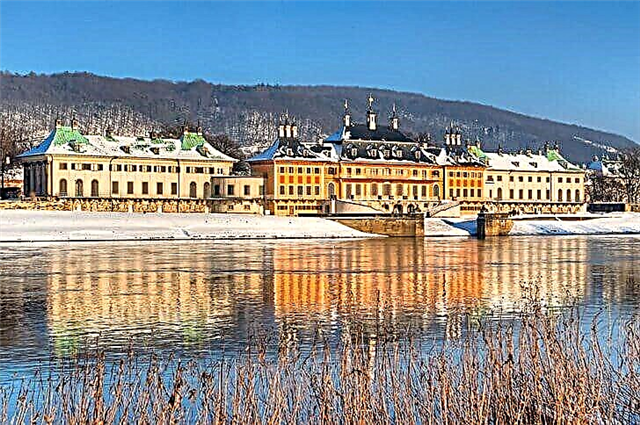
Elbe Castles Dresden
Three small castles of the mid-19th century, standing on the right bank of the Elbe: Lingner, Albrechtsberg, Ekberg. The structures have never performed defensive functions, they were created for the Prussian Prince Albrecht. In the XX century, castles were used as hotels, exhibition halls, restaurants, offices of international organizations. The parks located on the territory surrounding the castles are open to the public.

Moritzburg castle
The majestic castle in the city of Moritzburg (14 km. From Dresden), one of the residences of the Wettin royal dynasty. In the middle of the 16th century, a hunting estate was located on the site of the castle. Under August the Strong, a large-scale reconstruction of the building itself and a redevelopment of the surrounding landscape were carried out. The result is a picturesque "palace on the water" in the Saxon Baroque style.

Elbe river
The river bed stretched for 1165 km. on the territory of Germany, Czech Republic, Austria and Poland. The Dresden Elbe Valley (and the old center of Dresden, which is part of it), because of its special beauty, was included in the UNESCO list before the construction of the Waldschlösschen Bridge. In the valley there are vast areas of flooded meadows, on which nothing was ever built, a closed nature reserve and natural terraces.

Bridge "Blue Miracle"
The official name of the building is Loshvitsky Bridge. The 280-meter-long structure connects the Loschwitz and Blasewitz districts. The bridge was erected at the end of the 19th century according to the project of the engineer B. Kruger, which was progressive and innovative for its time. Before the bridge went into operation, it was subjected to numerous strength tests. Nowadays, the "Blue Miracle" is in excellent condition and is actively exploited.

Bastei bridge
A bridge built between coastal rocks in the first half of the 19th century. The architecture of the building resembles the ancient Roman aqueducts and the early Romanesque building at the same time. It is surrounded by scenic views of the area known as the Saxon Switzerland National Park. The bridge rises 195 meters above the Elbe and offers a magnificent view of the river valley, mountain plateaus and coastal cliffs.



